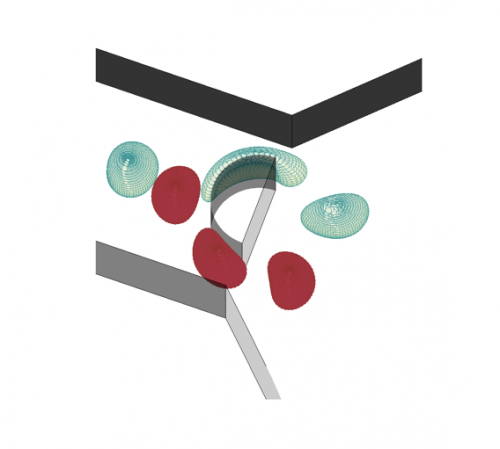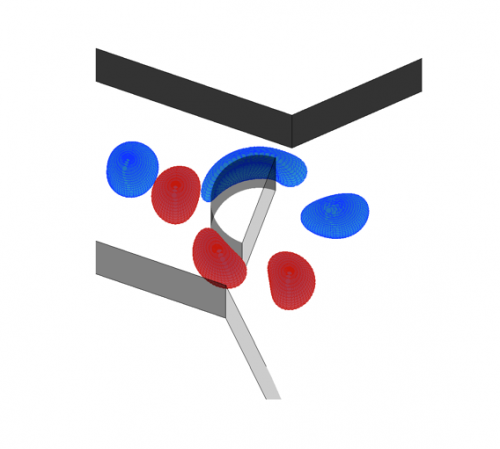New device could improve biomarker analyses

A device proposed by researchers at Sweden's KTH Royal Institute of Technology could offer a more reliable alternative for detecting biomarkers in patients facing such illnesses as cancer or malaria.
Whether to extract circulating tumour cells from the blood of a cancer patient, or to measure the elasticity of red blood cells due to malaria infection, the physical attributes of cells are important biomarkers in medicine.
Yet today, most cell sorting techniques rely on the difference between chemical properties of the cells.
The problem is chemical properties don't give pathologists the full picture. Two cells can have very similar chemical properties, but different physical properties. Size, shape and elasticity, or deformability, are important attributes that can be also enable cell sorting, given the right kind of device.
Luca Brandt, a professor of fluid mechanics at KTH, says his team used extensive computational simulations to propose a microfluidic device that would sort cells according to their elasticity.
Dhrubaditya Mitra, Assistant Professor in theoretical physics at NORDITA, Nordic Institute of Theoretical Physics at KTH and Stockholm University, offers an example of why elasticity matters. If you are infected with malaria, the physical nature of your red blood cells changes, he says.

"They become harder. And red blood cells also become harder as they get older too," Mitra says. "These harder red blood cells are filtered by the spleen which acts like a sieve. The softer red blood cells can squeeze through the gaps but the harder ones cannot."
Consisting of a duct embedded with a semi-cylindrical obstacle, and a diffuser, a microfluidic device works in a similar fashion. Several kinds of microfluidic devices have been fabricated to detect biophysical markers. But the big challenge has been in designing the geometries that allow for efficient cell sorting, Brandt says.
The design was proposed by the researchers at KTH Linne FLOW Centre and SeRC (Swedish e-Science Centre): Lailai Zhu, who implemented the numerical model, and Cecilia Rorai, who worked together under the guidance of Brandt and Mitra. Their work draws on numerical techniques and computational capabilities developed in the last decade to handle the complexity of microscale flows. The researchers recently published their paper in the Royal Society of Chemistry's journal, Soft Matter.
"A particular novelty of our work is that this design process has not been done in a laboratory but as a computer simulation," Brandt says, comparing their computer simulations to the early stages of aircraft or vehicle design. "We hope that our work will bring such a change to design of microfluidic devices, too."
More information: "A microfluidic device to sort capsules by deformability: A numerical study." Lailai Zhu, Cecilia Rorai, Dhrubaditya Mitra and Luca Brandt. Soft Matter, 2014, Accepted Manuscript. DOI: 10.1039/C4SM01097C. Received 20 May 2014, Accepted 20 Jun 2014. First published online 20 Jun 2014
Journal information: Soft Matter
Provided by KTH Royal Institute of Technology


















